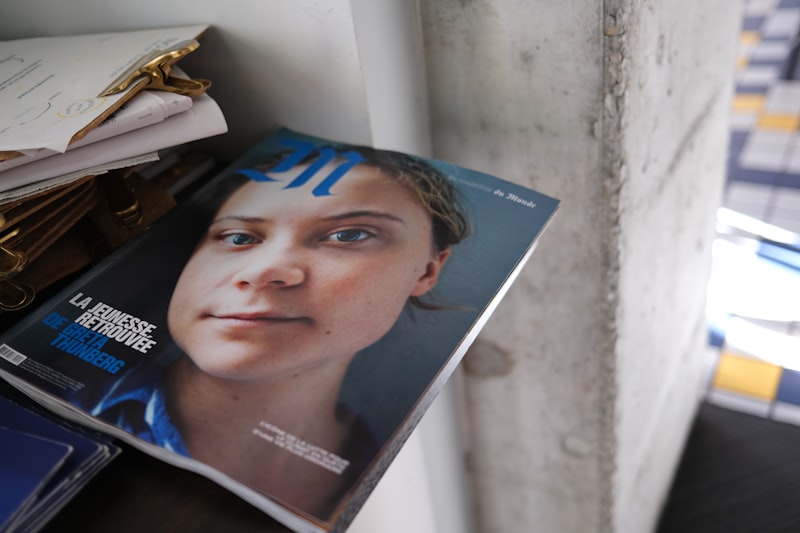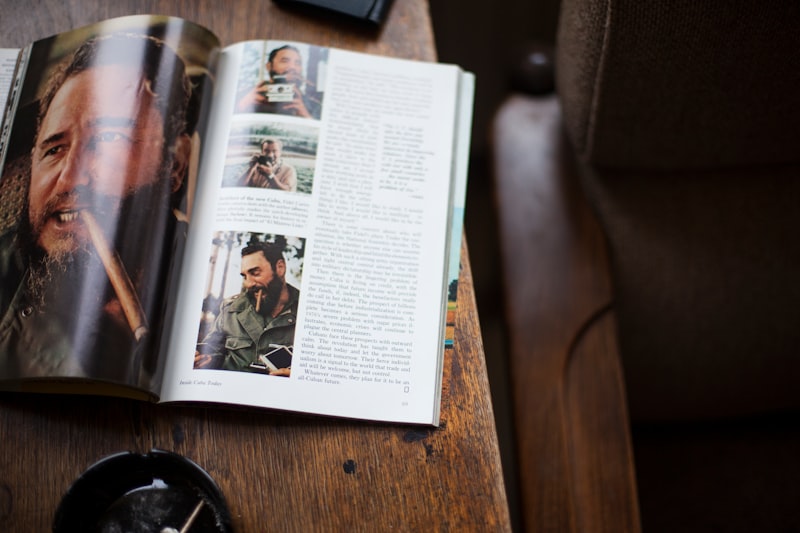How Do History Magazines Verify Historical Accuracy?
First off, history magazines rely heavily on primary sources. These are like the gold standard of historical evidence—documents, letters, diaries, and official records written during the period being studied. Think of them as eyewitness accounts from the past. But it’s not just about finding these sources; it’s also about scrutinizing their authenticity. Editors and historians dig deep to verify that these sources are genuine and not forgeries or fabrications.
Next up is cross-referencing. This is where the magic of historical detective work happens. By comparing multiple sources, magazines can piece together the most accurate picture of past events. If one source says a battle happened on a certain date but another source places it elsewhere, historians dive into more records to unravel the truth. It’s like being a historical Sherlock Holmes, piecing together clues from various sources.
Moreover, history magazines often consult experts and scholars who specialize in specific eras or events. These historians act like academic consultants, ensuring the magazine’s interpretations and claims stand up to rigorous scrutiny. They check the facts, provide context, and sometimes challenge prevailing narratives to offer a more nuanced view.
Lastly, rigorous fact-checking is crucial. Editors painstakingly review articles to catch any errors or misinterpretations. This step ensures that every fact published is as close to the truth as possible, like a final polish on a masterpiece.
So, the next time you flip through a history magazine, remember that a lot of behind-the-scenes work goes into making sure those intriguing stories are grounded in solid historical fact.
Behind the Scenes: How History Magazines Ensure Accuracy in Their Stories
Editors and historians don’t just skim through facts; they dive deep into archives, rare manuscripts, and primary sources. Imagine a detective piecing together a puzzle—each document and artifact is like a clue that helps build a more complete picture. They cross-reference information from multiple sources to ensure consistency and accuracy. This means that if one source mentions a date, they’ll verify it against others to confirm it’s correct.
But that’s just the start. Many magazines employ fact-checkers whose job is to scrutinize every detail, from names and dates to events and quotes. It’s like having a second pair of eyes to catch any slip-ups before the magazine hits the shelves. These fact-checkers often have specialized knowledge in different historical periods, allowing them to spot inaccuracies that others might miss.

So, next time you flip through a history magazine, remember that behind every captivating article lies a treasure trove of rigorous research and careful verification, all aimed at bringing you the most accurate and engaging historical narratives.
Fact-Checking the Past: The Rigorous Methods History Magazines Use to Verify Accuracy
First off, history magazines dive into a treasure trove of primary sources. Imagine these as the raw footage of history—diaries, official documents, letters, and photographs. These are the gold standard for verifying facts because they come straight from the horses’ mouths, so to speak. Historians scrutinize these materials for authenticity, checking dates, handwriting styles, and even the type of paper used to make sure everything adds up.
But the fun doesn’t stop there. They cross-reference information across various sources. If one document says something, historians will look for additional records to either back it up or challenge it. This process is like a historical game of telephone, but instead of the message getting twisted, historians are making sure the truth remains intact.
Another method involves consulting with experts. History magazines often bring in specialists who can offer insights or flag potential inaccuracies. Think of these experts as the secret agents of the historical world—sharp-eyed and knowledgeable, ensuring that every fact is vetted with utmost care.
Finally, rigorous fact-checking also includes peer reviews. Before an article hits the stands, it’s often reviewed by other historians or scholars who can spot errors or provide additional context. This collaborative approach helps catch mistakes that might have slipped through the cracks.

From Archives to Articles: The Process of Verifying Historical Facts in Magazines
First, researchers dig through archives, which are essentially treasure troves of historical records. Think of them as time capsules brimming with old newspapers, letters, and diaries. They sift through these materials like gold miners, looking for nuggets of truth. Each document is a clue, and each clue helps piece together the bigger historical picture.
Once they’ve unearthed intriguing facts, the real magic begins. It’s time for verification—a meticulous process that ensures every fact is as solid as a rock. Researchers cross-check sources like a librarian on a quest for the ultimate truth. They consult multiple records, compare dates, and even check with experts to confirm the accuracy of the information. Imagine it as piecing together a jigsaw puzzle, where each piece must fit perfectly to reveal the complete image.
After verification, the facts are handed over to magazine writers, who transform them into engaging stories. This is where the magic of storytelling happens. Writers take the verified facts and weave them into narratives that captivate readers. They use lively language and compelling details to make history come alive on the page. It’s like turning a dry, dusty manuscript into a vibrant, page-turning thriller.
The final step is a rigorous editorial review. Editors, like guardians of truth, ensure that every detail aligns with the verified facts. They check for accuracy, clarity, and, of course, a dash of flair. If everything checks out, the historical article is ready to go from the archives straight to the magazine’s glossy pages.
The Quest for Truth: How History Magazines Validate Their Sources
When a history magazine claims to unveil a new historical insight, it’s backed by rigorous validation. Editors dive into primary sources—like old letters, official records, or firsthand accounts. They then consult secondary sources that interpret these primary materials, ensuring a well-rounded perspective. But it doesn’t stop there. Experts and historians often review articles before publication, providing their expertise to catch any errors or biases.
The process is akin to a scholarly detective story. If an article mentions a historical event, the magazine’s team might verify the details against multiple sources, much like comparing different eyewitness accounts of the same event. This careful vetting process is crucial because it upholds the magazine’s credibility and maintains reader trust.
Sources are not just validated once; they’re revisited throughout the writing and editing process. Think of it as a continual check-up to ensure everything aligns perfectly. With modern technology, historical databases and digital archives have become invaluable tools, allowing magazines to access a vast pool of information quickly.
In essence, the quest for truth in history magazines is a blend of meticulous research, expert review, and ongoing verification. It’s this dedication to accuracy that transforms historical content from mere stories into reliable, insightful narratives.
Uncovering Historical Truth: The Role of Experts in History Magazine Accuracy
These specialists don’t just skim through old documents; they dive deep into archives, scrutinize every detail, and cross-check facts to ensure the stories are as accurate as possible. Think of them as detectives piecing together a grand puzzle. Their extensive knowledge and meticulous research are what make historical articles come to life, transforming dry facts into engaging narratives.
But why is this so crucial? Without these experts, a magazine could easily fall into the trap of spreading misinformation. Imagine reading about a major historical event and discovering it’s riddled with errors. Not only would that undermine the credibility of the magazine, but it would also mislead readers about our past.
Experts also help in interpreting complex historical contexts, making sure that the articles don’t just scratch the surface but delve into the nuances. This helps readers gain a deeper understanding of why events unfolded the way they did and what they mean in today’s context.
In essence, historians and experts are the unsung heroes of history magazines. They ensure that every article isn’t just a story, but a well-researched piece of historical truth. So next time you read a history magazine, remember the careful craftsmanship behind each page.
Navigating Historical Bias: How Magazines Maintain Objectivity in Historical Reporting
Magazines rely on a few key strategies to navigate historical bias. First up, they often involve multiple experts in their research process. This is like having a team of historians with different specialties examining each puzzle piece to ensure it fits. By drawing on diverse perspectives, they minimize the risk of one person’s bias coloring the whole picture.
Then, there’s the importance of transparency. Good magazines lay their cards on the table by clearly citing sources and acknowledging any potential biases. Think of it as putting a label on each puzzle piece to show where it came from, so readers can see how the final picture was assembled.
Another crucial strategy is the rigorous fact-checking process. This is like double-checking that each piece fits perfectly and matches the surrounding pieces. Magazines often employ fact-checkers who cross-reference information from multiple sources to ensure accuracy.
Finally, magazines strive for balance by presenting various viewpoints on controversial topics. This approach helps create a more rounded narrative, preventing any single perspective from dominating the story. It’s akin to ensuring that no single puzzle piece overshadows the others, creating a more comprehensive and fair representation of history.
Navigating historical bias isn’t just about avoiding errors—it’s about creating a narrative that readers can trust, making sure that every piece of the puzzle contributes to a complete and honest portrayal of the past.
How History Magazines Cross-Check Facts to Avoid Historical Fiction
First up, these magazines lean heavily on expert historians and scholars. Imagine them as the ultimate fact-checking squad, meticulously reviewing every detail before anything hits the page. These experts aren’t just any historians; they’re specialists in their field, often with years of digging through primary sources and archives. It’s their job to ensure that the narrative stays rooted in reality and doesn’t stray into the territory of “what if” scenarios.
Then, there’s the rigorous process of cross-referencing. Picture a detective solving a case, pulling together clues from various sources to ensure the story holds water. History magazines do just that, comparing information from different documents, books, and studies to confirm accuracy. If a fact doesn’t line up across several sources, it raises a red flag.
Furthermore, primary sources are the gold standard. Think of these as the direct evidence from the time period being discussed—like letters, official documents, and diaries. Magazines dig into these first-hand accounts to ensure their stories are as authentic as possible. It’s like going straight to the source rather than relying on second-hand gossip.
Finally, historical fiction may sound fun, but for history magazines, it’s a no-go zone. Their goal is to present the past as accurately as possible, free from embellishment or guesswork. By sticking to vetted facts and expert analyses, they keep the narrative grounded in reality, ensuring readers get a true picture of history’s rich tapestry without any fictional threads.

